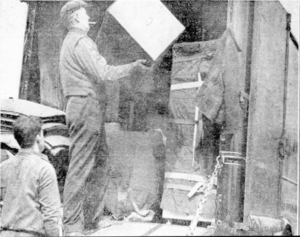April First—Flitting Day

Written by Martha Abel
You will have noticed, if you look at old deeds, that many property sales took place on April 1. No fooling. It was also the day that all rental housing leases expired, and so many people took the opportunity to move (or flit) to a new place. From the colonial days at least until the 1940s, the first of April was Lancaster’s general moving day. It was also the day that annual salaries were paid, and loans came due.
We were not alone in this. Philadelphia, Pittsburgh, and small towns across Pennsylvania all had a moving day, as did New York City and Chicago. Some chose May first, hoping for less mud on the unpaved streets. Montreal still has the tradition, but they do it now on the first of July.
No one is sure why this was the case—it was just tradition. It was probably a holdover from colonial days—England started the fiscal year on April 6th. This itself was a holdover from earlier times when accounts were settled and debts paid on four “quarter days,” the dates taken from Christian holidays. The first quarter day in the year was “Lady Day,” or the Annunciation, March 25. When the calendar changed from Julian to Gregorian in 1750, the date shifted to April 5.
The date shifted a little from year to year, too, depending on which day of the week April first fell on. You wouldn’t move on a Sunday; Fridays were considered unlucky for any purpose, and Saturdays were bad, too: “A Saturday flitting makes a short sitting.”
Whichever day it landed on, banks and lawyers did a record business. In 1929 the Recorder of Deeds reported an average of 5 or 6 deeds coming in per day, but on April first they did more than 200.

As early as 1886, advertisers took advantage of the big move to sell furniture, blinds, cleaning products and the like. One clever carpet-cleaning business offered to pick up your dirty rugs from the old address and deliver them, cleaned, to the new one. And don’t forget, we are reminded in 1927, to let the milkman know you moved.
The tradition gradually faded away. Moving dates were stretched before and beyond April first depending on when movers could schedule you. Six-month leases also became more common, and a secondary October moving day developed. It finally died out after World War Two, when the housing market was so tight that you took what you could get as soon as it was available.
One last note—when you’re in town settling up, be alert for pickpockets, who would come in from Philadelphia for the day. That organ-grinder’s monkey at the Square? He may be trained in the art, too. And if you see money lying on the sidewalk, it might have been put there by a young April Fool’s Day prankster. Check it first for an attached string.
From Archives Blog
